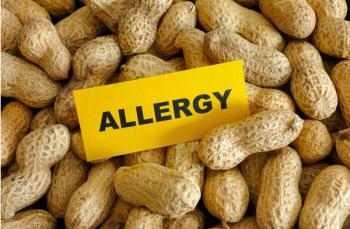
Awareness of Lung Cancer Screening Extremely Low Among Those at Highest Risk in the US: New Data
Among current smokers, 71% had never spoken a clinician about screening and among those who had quit, 75% had never had a conversation.
More than 80% of adults at high risk of lung cancer indicated they were unaware of available screening for the disease or had never discussed screening with their health care practitioner, according to results of a research letter published in JAMA Network Open.
The high-risk population included adults aged 50 to 80 years who were either current or ex-smokers. Among those who used to smoke but had quit, 18% had never heard of lung cancer screening and fully three quarters (75%) had never talked about the issue with a clinician. Among adults who currently smoke, the findings were similar, with 14% saying they had never heard of the test and 71% saying they had never spoken about it with a clinician.
A stunning finding was that more than half (60%) of study participants who had a history of cancer or comorbid lung disease did not discuss lung cancer screening with their clinicians.
The findings cut across a wide range of cultural, socioeconomic, and demographic characteristics, the author wrote.
“We’ve got a screening test that works. It works as well, if not better, than breast and colorectal cancer screening in terms of mortality reduction. It's one of the most life-saving things we have for a cancer that kills more people than either of those two combined,” pulmonologist Gerard Silvestri, MD, MS, professor of medicine at the Medical University of South Carolina (MUSC) and the study’s senior author, said in a MUSC press release.2 And yet, he said, “Eighty percent of those eligible for this screening, regardless of race, education, ethnicity, health or income, hadn’t heard of or discussed lung cancer screening with a clinician.” Nor did urban vs rural residence or health insurance status alter the result, according to the study.2
“I wish I could say that I was surprised by these findings, but I do not think that lung cancer screening has the same level of popularity as colon cancer screening,” Benjamin Toll, PhD, co-director of the lung cancer screening program at MUSC, director of the MUSC Health Tobacco Treatment Program and a co-author on the paper said in the statement.2 “I think it'd be great if we could encourage our physicians, especially our primary care doctors, to push this as a screening method, especially for current smokers,” he said.
“We’ve got a screening test that works. It works as well, if not better, than breast and colorectal cancer screening in terms of mortality reduction. It's one of the most life-saving things we have for a cancer that kills more people than either of those two combined."
He followed with the acknowledgement that the patient care burden in primary care is already significant; while a primary care visit appears to be an opportune setting for screening conversations, there is so much to get done in an allotted 15-or 20-minute slot that prioritization can be hard.2 Silvestri and colleagues at MUSC wanted to know more about how often such communication by health care practitioners is taking place and chose a high-risk cohort that they stratified by smoking status and demographic, socioeconomic, and clinical characteristics.1
For the cross-sectional analysis, Silvestri and team tapped data for participants in the nationally representative 2022 Information National Trends Survey (HINTS)-6, conducted by the National Cancer Institute. Information was provided by self-report by 929 former smokers and 350 current smokers, representing a combined estimated population size of 40.9 million. Participants were asked if they had heard of lung cancer screening or had talked about it with a clinician at any point within the last year.1
Results are Troubling
In all the team found that less than 16% of high-risk individuals had either heard of or discussed lung cancer screening with a health care professional, a result they say is "troubling" given that 13.1 million Americans meet the eligibility criteria for the test, ie, 20 pack-years and fewer than 15 years since quitting.1
Silvestri suggests that those at high-risk of lung cancer may evade screening altogether, noting that the group of people who are eligible for this screening test also happens to be a particularly hard-to-reach group.2
"Smoking in and of itself is a marker for disparity,” he said. “Research shows that people who smoke tend to have lower incomes, live in rural areas, have less education and be less likely to have a primary care provider – all of which makes this group harder to reach.”2
Their data, the authors said, underscore the need for increased lung cancer screening communication, including education and outreach to those who are eligible for the test. Efforts at the clinic and community level could help raise awareness for lung cancer screening and also facilitate "shared decision making between eligible patients" and clinicians.
There is progress in some areas, Silvestri observed, as medical groups work to incorporate lung cancer screening into their electronic health records, but it is much harder to make this type of screening “operational” compared to adding reminders for other types, such as colon cancer screening. That reminder only requires a birthdate in the record since screening is recommended for every one beginning at age 45. Lung cancer screening requires more and fairly specific data that may not be in the health record.2
But that hasn’t stopped the group at MUSC from expanding it lung cancer screening program throughout the state. Moreover, Silvestri said, “We're finding a 3.3% diagnosis rate. More importantly, most of those are early-stage so they have a strong chance for a cure.”
References
1. Sonawane K, Garg A, Toll BA, Deshmukh AA, Silvestri GA. Lung cancer screening communications in the US, 2022. JAMA Netw Open. 2024;7(11):e2442811. doi:10.1001/jamanetworkopen.2024.42811
2. Cantu L. Awareness of lung cancer screening remains low. Hollings Cancer Center. November 4, 2024. https://hollingscancercenter.musc.edu/news/archive/2024/11/04/awareness-of-lung-cancer-screening-remains-low
Newsletter
Enhance your clinical practice with the Patient Care newsletter, offering the latest evidence-based guidelines, diagnostic insights, and treatment strategies for primary care physicians.















































































































































































































































































